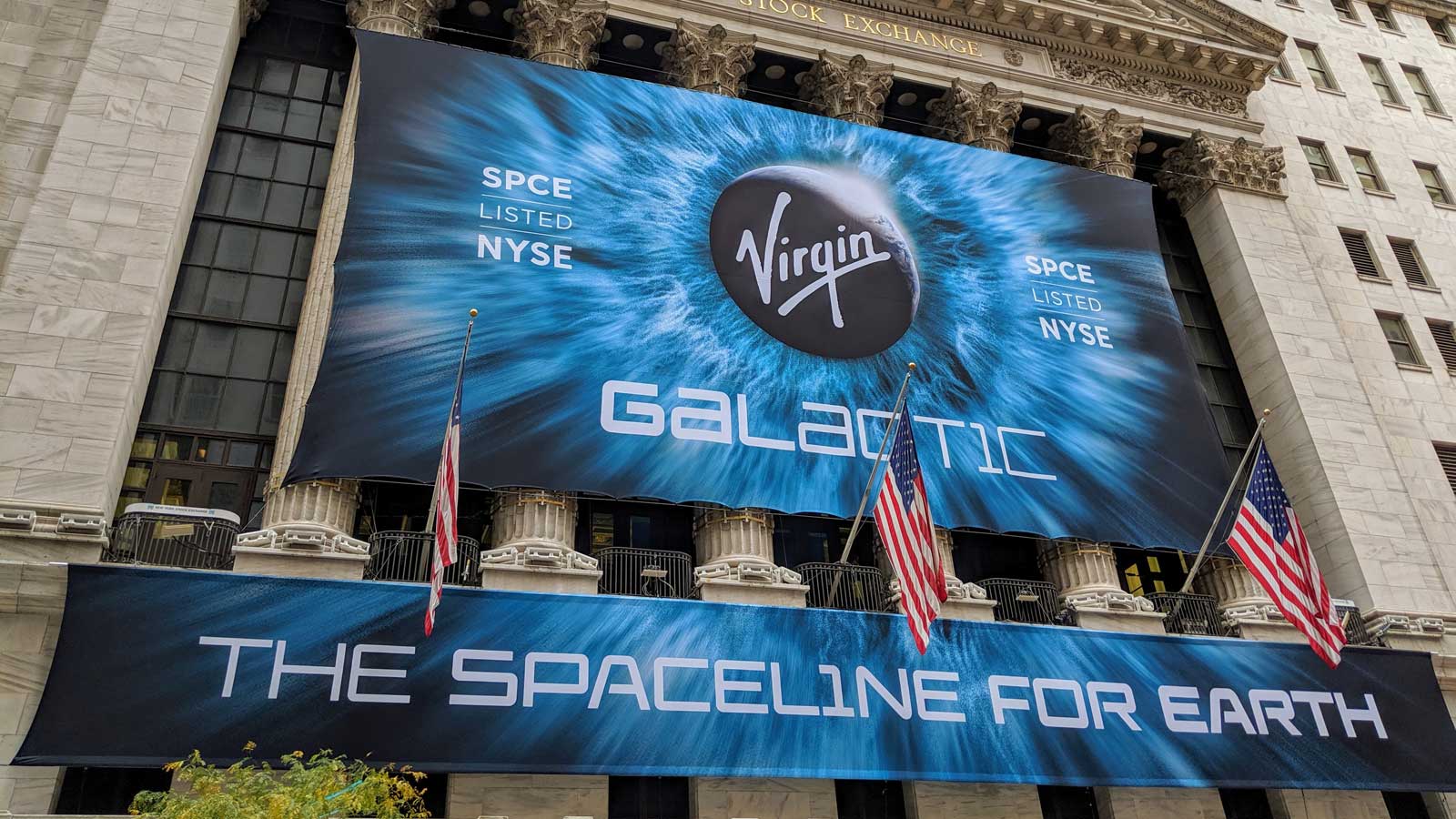Once one of the top-rated market debuts via a reverse merger with a special purpose acquisition company, Virgin Galactic (NYSE:SPCE) traded for nearly six times its initial offering price of $10. However, that was back in February, when post-merger SPACs enjoyed the peak of their success. As of the close of Dec. 17, SPCE stock is down almost 38% for the year.
Perhaps Benzinga contributor Melanie Schaffer said it best: the bears are in control of SPCE stock, along with other high-profile technology names. But how did something so promising tumble so badly?

As optimists of SPCE stock would readily admit (assuming they’re being intellectually honest), Virgin Galactic was, in the early stages, always going to be an aspirational play. With its third quarter 2021 revenue coming in at under $3 million against a net loss of over $48 million, it would be hard to swallow this pill if you didn’t understand the bigger picture.
And what exactly is that bigger picture? The space economy, otherwise known to Trekkies as the final frontier. According to Morgan Stanley, the “revenue generated by the global space industry may increase to more than $1 trillion by 2040.” To put this figure into context, this is roughly the GDP of Indonesia, ranked number 16 in terms of economic output.
Further, Morgan Stanley isn’t alone in its bullishness. Per a report by the Institute for Defense Analyses, “Projections for 2040 range from a forecast by UBS, an international bank, of $926 billion, to one by Goldman Sachs of a ‘multi-trillion’ dollar space economy.” As well, Bank of America “projects a $2.7 trillion space economy in 2045.”
So while I have not been the most optimistic about SPCE stock, those who took a wager on it were not being irrational.
SPCE Stock May Have Overshot Its Target
Still, the above sentiment will be little comfort to those who are now taking it in the chin. One of the problems with SPCE stock right now is that it suffers from a two-fold headwind.
First, risk-on assets apparently don’t make much sense to investors right now. As you know, the Federal Reserve provided clarity in its monetary policy, indicating that interest rates will rise and that the its bond buy-back program will stop. Initially, the Fed’s decision ended speculation about its longer-term strategy. However, later digesting of the news sent investors to the exits.
With other growth sectors tumbling — most notably cryptocurrencies — the risk in holding growth over income-generating names may not be worth it for many. SPCE stock being aspirational, it’s going to take a haircut in this environment.
But Virgin itself dropped the ball, with management disclosing in October that “Recent material testing returned new data that requires further analysis.” Unfortunately, this matter will delay the company’s commercial travel services until late into 2022.
Therefore, SPCE stock isn’t just aspirational. It’s going to be that way short of a stunning reversal for close to a year. With the present ecosystem, investors just might not want to wait that long.
The negativity could also be pointing to Virgin and similar space industry names trying too hard to fit a technological square peg in a round hole. From the get-go, very few could afford these space travel journeys anyway. And once those folks got their fun, what else was there?
If that wasn’t bad enough, even practical names like Planet Labs (NYSE:PL) — which specializes in satellite-imagery services that contribute to the agricultural, energy and defense sectors, among many others — are hurting.
No One Can Hear You Scream
For years, one of my friends used to say, “opinions are like posteriors: everybody has one.” Well, he used a different word for posterior, but you get the point. Anyways, I suppose you can say the same about projections.
Sure, the space economy appears as if it’s on track to be a trillion-dollar industry. All the math — based on the projections, that is — seem to point in the right direction. Yet it’s worth reminding ourselves that people across all professions have made serious blunders regarding their forecasts. While I’m sure the art of forecasting has improved over the years, it’s not an exact science.
And irrespective of the fallibility of calling the future, investors may be questioning the viability and practicality of Virgin Galactic’s core businesses. When even space-economy firms that are relevant now are cratering, it might be time to rethink SPCE stock before jumping on this discount.
On the date of publication, Josh Enomoto did not have (either directly or indirectly) any positions in the securities mentioned in this article. The opinions expressed in this article are those of the writer, subject to the InvestorPlace.com Publishing Guidelines.
A former senior business analyst for Sony Electronics, Josh Enomoto has helped broker major contracts with Fortune Global 500 companies. Over the past several years, he has delivered unique, critical insights for the investment markets, as well as various other industries including legal, construction management and healthcare.
